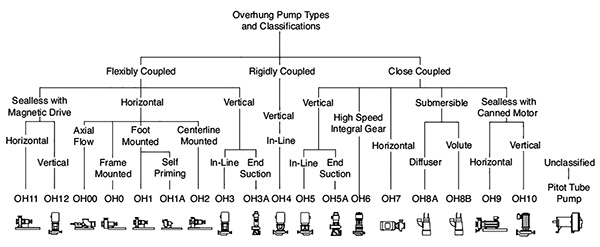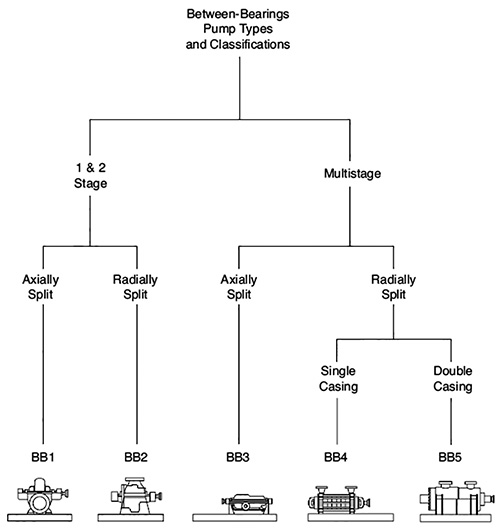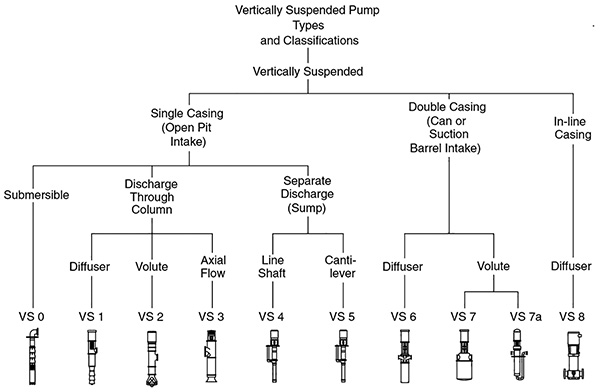The Hydraulic Institute (HI) recently announced the publication of a new document, ANSI/HI 9.6.8 Dynamics of Pumping Machinery, that addresses the need for guidance on dynamic analysis of different pump applications.
Developed through a large cooperative committee of HI pump manufacturer members, HI Standards Partners and HI Associate Members, almost all HI rotodynamic pump member companies were represented at various times during the 10-year period required to produce this new document.
The Dynamics of Pumping Machinery document was initiated in 2005 during a revision of the 2000 edition of HI's normative vibration standard, ANSI/HI 9.6.4-2000 (since superseded by ANSI/HI 9.6.4-2009), when the committee recognized that guidance information pertaining to dynamic analysis contained in that standard was best addressed in a separate guideline document.
The concept was to create a document that provided guidance to the pump industry regarding recommended best practices for dynamic analysis of pumps and pumping equipment across the immense scope of pump types and applications addressed by HI Standards (see Figures 9.6.8.1.2a, 9.6.8.1.2b and 9.6.8.1.2c).
 Figure 9.6.8.1.2a. Rotodynamic pump types - overhung (Graphics courtesy of Hydraulic Institute)
Figure 9.6.8.1.2a. Rotodynamic pump types - overhung (Graphics courtesy of Hydraulic Institute) Figure 9.6.8.1.2b. Between-bearings pump types and classifications
Figure 9.6.8.1.2b. Between-bearings pump types and classificationsA pressing need exists in the market for guidance on pump dynamic analysis. Over the past few decades, an accelerated trend in the use of variable speed drives (a trend most likely to continue) is making it increasingly difficult to avoid resonance and vibration issues. While analytical tools and techniques have been developed to address these challenges, no comprehensive guidebook has been available that discusses the use of standard tools and techniques from a standards perspective. Most other guidelines pertain to specific product types or markets.
In consideration of the full scope of equipment configurations and application characteristics associated with various rotodynamic pumps, a single approach does not address all needs. No existing directives provide guidance on what tools should be used across various applications, different markets and diverse products. These and other issues are addressed by HI's new Dynamics of Pumping Machinery.
Different preventive measure techniques are available; some are simple, while others are complex. While most pumps do not require analyses when purchased, some applications need complex analyses and others require something between the extremes. In other words, one solution does not—and cannot—fit all.
Dynamics of Pumping Machinery provides guidance on what types of dynamic analyses should be performed on different pump installations. It provides assistance for choosing the right level, if any, of dynamic analysis required to ensure the suitability of the pumping machinery design, recommends standard approaches and outlines what to consider in certain situations. However, the guidebook does not address how to perform the details of the various analyses. Special training and education is typically required to perform analyses within the full scope of this guideline. The publication should complement the objectives of organizations that provide analysis tools and training or education services to the industry.
As Dynamics of Pumping Machinery serves as an information resource (not a normative standard), compliance is voluntary except as cited in contractual agreements. The document can be used to facilitate agreement among various contractual entities involved in pump procurement between the user (or purchaser) and manufacturer (or supplier).
It is the prerogative of the document user to decide on the degree of the analysis, including whether to perform additional analyses beyond those recommended as a standard approach. The pump manufacturer also can offer guidance on the type of analysis relevant for the specific installation and assist with application of guidelines. Most important, the guideline was developed to facilitate coordination with the pump manufacturer or supplier as an integral part of the decision-making process.
Despite the broad scope of the guideline, various specialty topics are excluded, including seismic analysis considerations, analyses involving certain considerations of hydraulic excitations such as acoustic/pressure pulsation analysis and analyses involving computational fluid dynamics (CFD) methods. Rotor stability analysis is also outside the scope of the analyses conducted as standard procedure. However, a rotor stability analysis may be considered optional; some discussion is provided regarding when such analyses are appropriate. Vibration level acceptance criteria are excluded but addressed in ANSI/HI 9.6.4 Rotodynamic Pumps for Vibration Measurements and Allowable Values.
Dynamics of Pumping Machinery can be applied to new equipment, existing equipment, field modifications or re-rates (if dynamics characteristics are changed), and field troubleshooting. Evaluation scenarios may include rotodynamic pump dynamic response, foundation support effects, drive systems, ancillary equipment, and effects of local foundation and piping systems.
The vast majority of rotodynamic pump applications involve standard products produced from established designs, and the user needs only to install the pumping equipment in accordance with HI standards and the manufacturer's instructions to attain satisfactory life and service. However, some applications involve custom configurations that require additional engineering effort, such as a substantially new pump design, significant pump modification, adaptation of a standard design to a non-typical application, different physical arrangement and different operating conditions. Applications also exist in which the dynamic characteristics are significantly influenced by the installation, such as piping systems, mounting and drive systems. In these applications some type of dynamic analysis may be needed.
The Dynamics of Pumping Machinery guideline addresses three types of dynamic analyses for pumps and pump trains:
- Rotor lateral
- Rotor torsional
- Structural, including Reed frequency analysis
For the purpose of categorization, the guideline introduces three levels of analysis for each of the three analysis types:
- Level 1 - Simple calculations performed using standard or derived equations
- Level 2 - Intermediate methods that involve basic mass elastic modeling using commercially available software tools such as finite element analysis
- Level 3 - Advanced methods involving multiple specialty programs and complex methodologies, typically undertaken by specialists
To guide the document user to the appropriate analysis level, the following tools and discussions are provided:
- Decision matrix and uncertainty values table to help quantify risk and uncertainty
- Market influences considerations
- Market trends considerations
- Cost and lead time considerations
Examples of typical analysis types are discussed in three sections, with a section outlining each specific level of analysis (Level 1, Level 2 and Level 3). Recommendations for numerical procedures for Level 2 and Level 3 analyses are provided in an appendix.
Several other useful appendices address term definitions, typical input data requirements for the various analyses, vertical structure natural frequency considerations, vertical motor Reed frequency considerations and a suggested analysis reporting format.
Two very important appendices contain sample specifications; one features sample specifications for applications involving motor Reed critical frequency properties. These appendices provide simple "cut-and-paste" sample specification wording for use in contract specifications. This feature helps facilitate the proper specification of dynamic analysis.
Use of suggested wording in these appendices produces clear specifications that can be understood by all parties across contractual boundaries.
The appendices with sample specifications are organized by analysis level, analysis type and pump type (when applicable) for ease of use while assuming that the specifier already has decided upon the appropriate dynamic analysis and the desired minimum frequency separation margin to be obtained through the analysis. Lines are left blank to outline specifications of the minimum frequency separation margin desired through the analysis for each analysis type and level.
The guidebook discusses recommended separation margins. Note that often for cases involving variable speeds with multiple excitation sources, successful solutions using a desired margin may not be obtainable—a situation that is amplified by the use of higher margins. As natural frequencies need a safe landing area by design, large required margins by analysis can make this more difficult. The broadly used 25 percent margin—especially in the past when most pumping equipment was constant speed and analysis tools were limited—may not always provide the best approach for the challenges presented by today's applications.
 Figure 9.6.8.1.2c. Rotodynamic pump types — vertically suspended
Figure 9.6.8.1.2c. Rotodynamic pump types — vertically suspendedFrom a practical perspective, a 10 percent separation margin obtained in the field is typically satisfactory to avoid unacceptable vibration response amplification. Of course, by analysis, a higher separation margin than 10 percent is recommended appropriate to the expected inaccuracy of the analysis. However, Dynamics of Pumping Machinery informs the user not to specifiy the margins unnecessarily high, as this can be detrimental. In the end, however, the specifier voluntarily chooses a desired separation margin and inserts this information in the sample specification wording provided by the document for use in the contract specifications.
Users of the Dynamics of Pumping Machinery are invited to direct any comments or suggestions for improvement to Peter Gaydon of the Hydraulic Institute at pgaydon@pumps.org.
Mick Cropper, Director - Technology, Sulzer Pumps (US) Inc., Vice Chair
Bill Marscher, President, Mechanical Solutions, Inc., Steering Committee Participant
John Anspach, John Anspach Consulting, Steering Committee Participant


